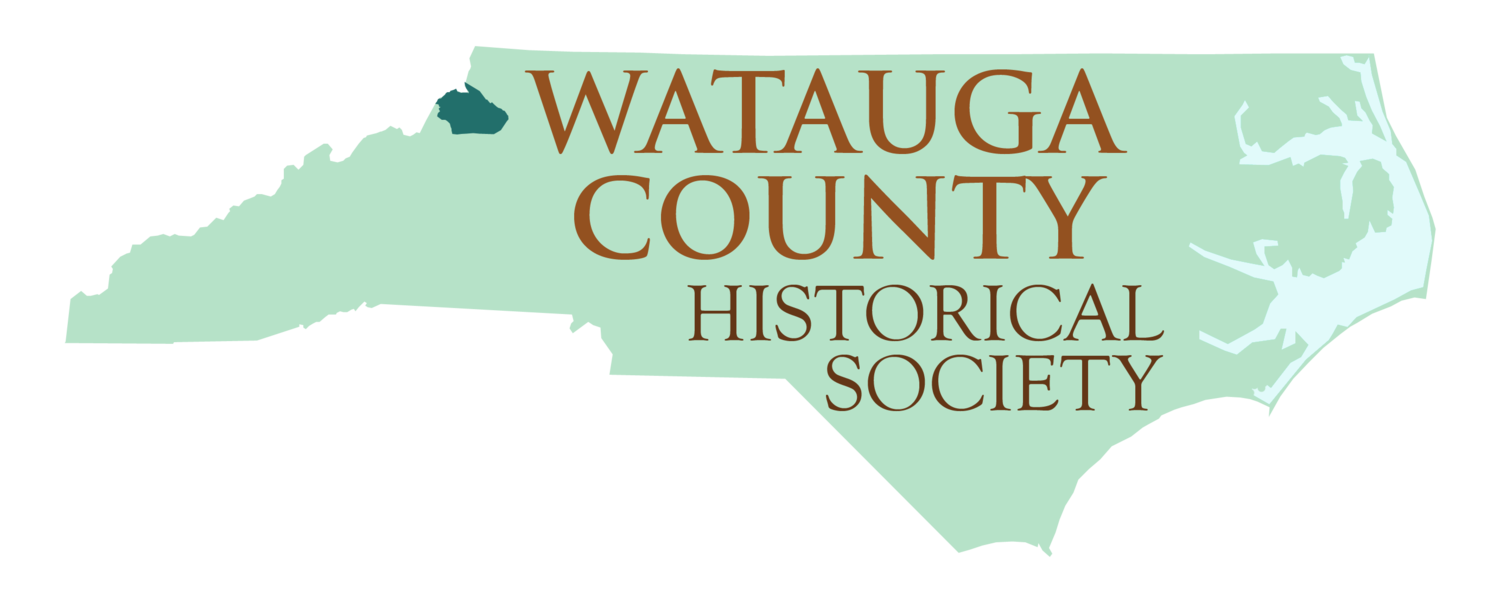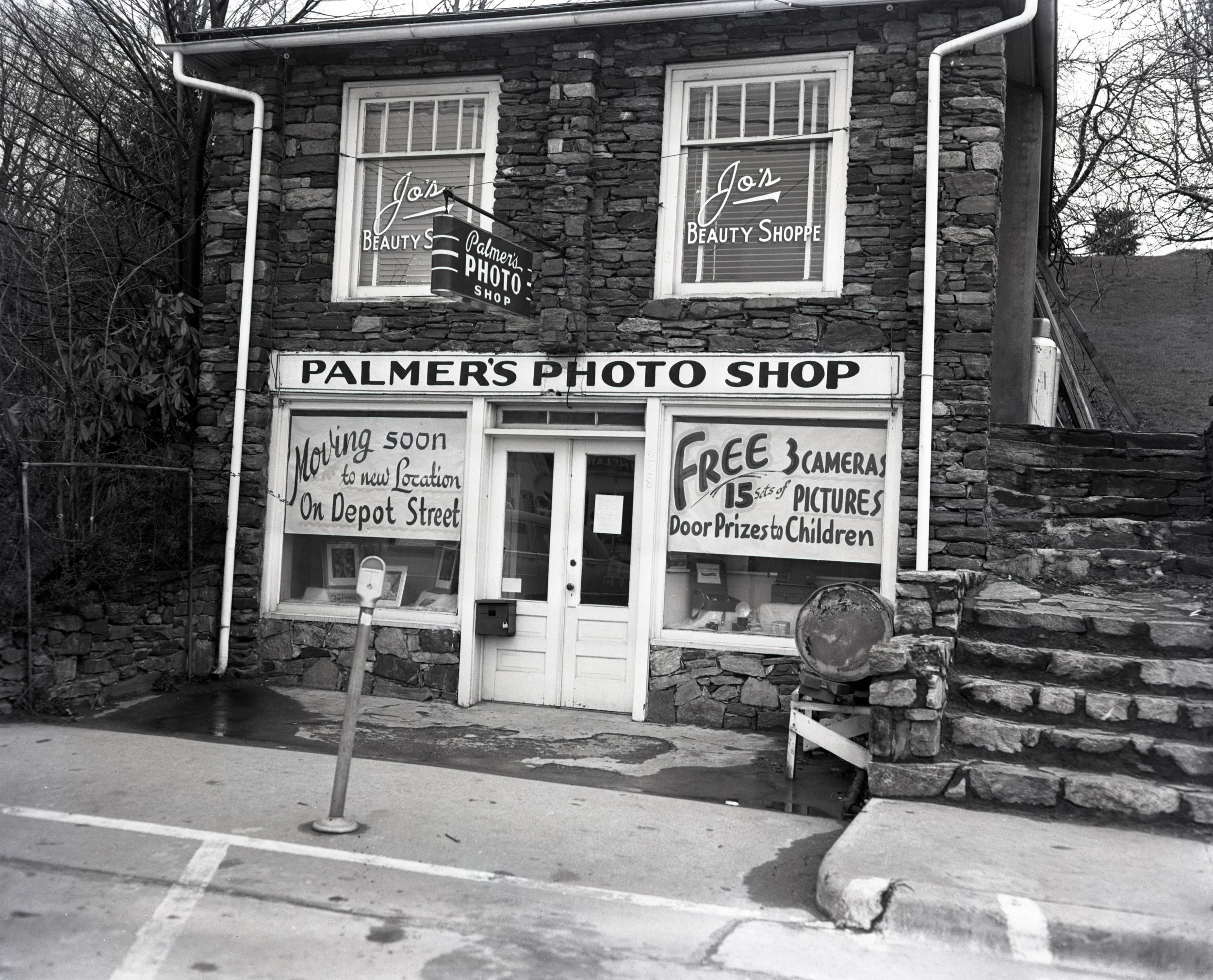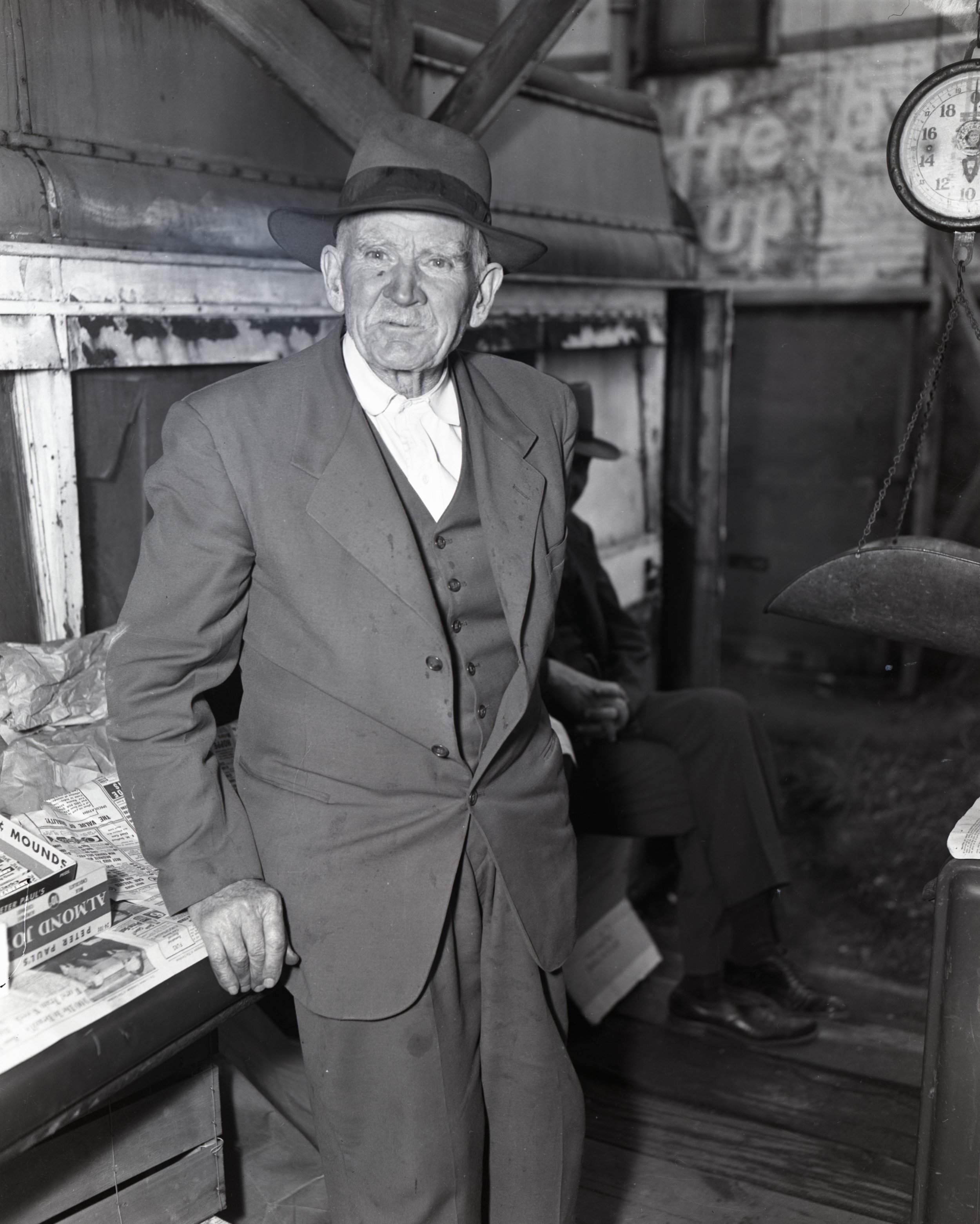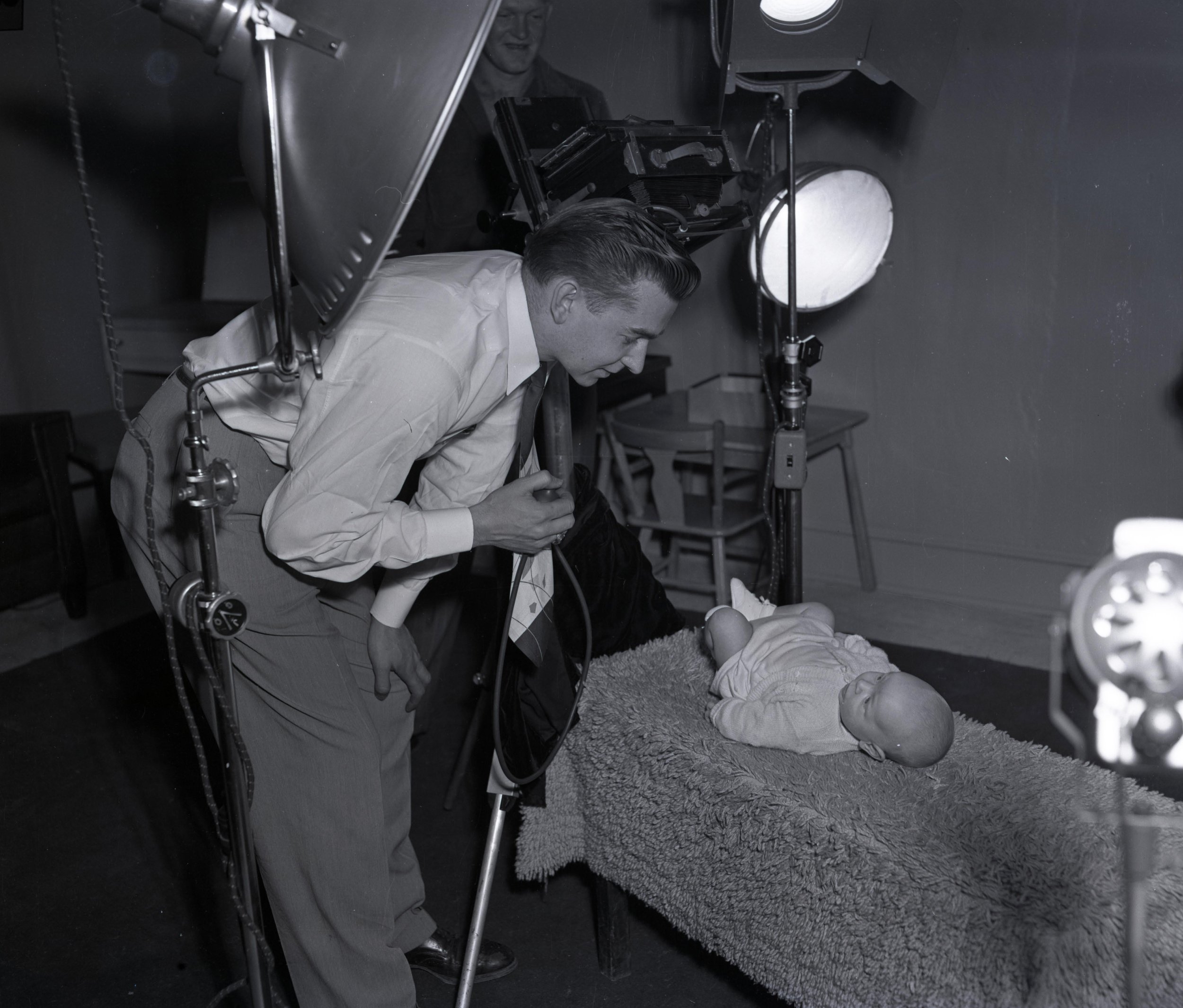Eric Plaag and Susan Rebecca Blair
December 30, 2023
The Watauga County Historical Society (WCHS) is delighted to announce that Palmer Sligh Blair (1922-1957) is the second of three inductees to the 2023 class of the WCHS Hall of Fame. Born on July 8, 1922, in Watauga County, Palmer Sligh Blair was the second of two sons among five children born to Henry Neal Blair and Martha Lee Sligh Blair. Palmer was raised on the 300-plus-acre working Blair Farm located on the southeast end of Boone, one of the few intact farmsteads remaining today within the town limits of Boone. Palmer was among the fourth generation of Blairs to occupy the farmhouse there, which dates to 1844 and is listed on the National Register of Historic Places for its architectural significance.
Palmer Blair grew up attending local schools, including Boone High School, where he played the drums in the high school band and graduated with distinction (and with the “Most Attractive Boy” superlative) in 1939. Palmer enlisted in October 1942 with the Army Reserves, apparently for his technical skills as a photographer, but does not appear to have been called to service. In 1943, while enrolled at Appalachian State Teachers College (or ASTC), he was the front person for “Palmer Blair’s Band,” which played at war bond drives and other community events during World War II. Palmer graduated as a history and science major from ASTC (now Appalachian State University) in 1945, the same year he met his future wife, Sarah Lynn Rives, a freshman from Jonesboro, North Carolina. They were married in October 1947.
Palmer Blair’s studio in the ground floor space of the Linney Law Office, circa 1952. Image courtesy of the Palmer Blair Collection, Digital Watauga Project.
Palmer began exploring the world of photography and working in the field while a student in college. During that time he convinced his mother to allow him to set up a darkroom in a tiny room off of the kitchen’s back porch at the Blair home place. He opened his first photography business in 1946, eventually locating the operation in the basement of Wade Brown’s first law office at 766 West King Street (now home to 828 Real Estate). In late 1948, Palmer moved his business and studio to the Linney Law Office Building at 718 West King Street. By 1952, he had outgrown that building and relocated his business to 127 Depot Street, now Black Cat Burrito. Beginning in April 1953, the final home of “Palmer’s Photo Shop” was in the Qualls Block at 597 West King Street (then 125 East King).
Much of Palmer’s professional work involved consumer portraiture, stringer work for local and regional newspapers (including the Watauga Democrat, the Charlotte Observer, the Winston-Salem Journal, and the Asheville Citizen), and commissioned photography for family reunions, high school and college yearbooks (including ASTC), private parties, police investigations, insurance documentation, and corporate marketing. Palmer also loved all the creative dimensions of photography and shooting images in his spare time. Beginning in the late 1940s, after his father created Boone’s first airfield in 1947, Palmer began taking aerial flights for photography purposes. His several series of aerial images from the 1950s, many of which survive at the Digital Watauga Project, offer an astonishingly comprehensive view of outlying areas around Boone as well as Boone’s downtown and the ASTC campus. His “Workers of Boone” series, consisting of nearly 400 images of employees of various Boone businesses, captured the interiors of many of Boone’s businesses as well as portraits of many of Boone’s “regular folk,” whose images otherwise rarely made it into the newspaper during the period.
In this image from Palmer Blair’s 1952 “Workers of Boone” series, 79-year-old James Lyons hawks his wares from his hollowed-out bus shell doubling as a farmstand at the southwest corner of Appalachian and King Streets, now the site of Jimmy Johns. Image courtesy of the Palmer Blair Collection, Digital Watauga Project.
Blair’s widow, Sarah Lynn Rives Blair Spencer (1927-2021), donated digital use rights to Blair’s extensive catalog to the Digital Watauga Project in 2016. Many of the negatives, prints, and moving image reels in the Palmer Blair Collection document his fascination with aerial photography, the use of infrared film, and his gorgeous compositions of snowy landscapes, which are often the most difficult scenes to capture on black-and-white film. While many of Palmer’s images—particularly from the late 1940s—were lost as a result of basement flooding in the Boone Chamber of Commerce during the early 2000s (when portions of his work were mingled with the George Flowers Collection then in the Chamber’s possession), his surviving catalog of news photography and portraiture nevertheless provides critically important documentation of Watauga County and Boone citizens during the 1940s and 1950s. Palmer also occasionally created transparencies (effectively “new negatives”) and prints from existing historic prints that dated as far back as the 1890s, capturing images of Boone and Watauga’s past that would otherwise be lost to the ages. His collection of surviving images has been essential to documenting several Boone historic landmarks and the buildings within the Downtown Boone Local Historic District. Without his photographic contributions, our understanding of Boone’s history and its people during the 1940s and 1950s would be greatly diminished.
During the period from 1947 to 1957, Blair was a prominent figure in the Boone business world, the community’s primary news photographer, and an active documentarian of the 1949 Watauga County Centennial Parade and similar community parades that followed. In 1953, Palmer established the Blue Ridge Camera Club as a community organization and served as its president, effectively teaching his community how to make great photos and develop them in the darkroom, and he served as a board member with the Boone Junior Chamber of Commerce in the late 1940s and the Boone Rotary Club in the mid 1950s. In February 1957, three of Palmer’s images were featured as part of the 1957 Convention Exhibit, North Carolina Photographers Association, Inc., in Charlotte, North Carolina, where he received second place in the News and Candid Photos division and third place in the Color Transparencies category. Other memberships included the Boone Merchant’s Association, the Appalachian High School Boosters Club, and the Southern Photographer’s Association.
In this 1953 self-portrait, Palmer Blair also photographs an infant in his studio. Image courtesy of the Palmer Blair Collection, Digital Watauga Project.
Tragically, on March 21, 1957, Palmer Blair was killed in a plane crash doing what he loved—flying and capturing aerial images through his lens. That particular day was the first day that Palmer was using a recently purchased, state-of-the-art camera for his aerial work. He and his pilot, Hudson Claude Sisk, Jr., a cousin by marriage and a World War II bomber pilot who was also killed in the crash, were completing a contract project for a mining company operating the Ore Knob Mine in Ashe County. It was at least his second trip by plane to document the site in 1957. Palmer left behind a young wife, Sarah Lynn, and three small children, Palmer Sligh Blair Jr., Sharon Rousseau Blair, and Susan Rebecca Blair. Palmer’s young widow operated her husband’s business for the remainder of that year. She sold “Palmer’s Photo Shop” to George Flowers on December 31, 1957.
Following Palmer’s death, several of Blair’s friends established the Palmer Blair Memorial Scholarship at ASTC, intended for a Watauga County boy or girl based on “character, leadership, academic ability, and citizenship.” R. C. Rivers, Jr., editor of the Watauga Democrat, eulogized Palmer as “an upstanding citizen—a man of many fine qualities—understanding, generous, and kind. As time is measured, he’d been along [King Street] a short while, but was held in the highest regard by the people of the town and county, who were quick to recognize his abilities, his innate worth, and his uniform wholesomeness and gentility. We shall miss him.” The WCHS recognizes Palmer Blair’s continuing importance and enduring legacy for our community, nearly 70 years after his death, with his induction to the WCHS Hall of Fame.
The WCHS Hall of Fame honors individuals, either living or dead, who have made significant and lasting contributions to Watauga County’s history and/or literature, including those whose efforts have been essential to the preservation of Watauga County’s history and/or literature. Honorees need not have been residents of Watauga County. The WCHS is particularly interested in honoring individuals who meet the above criteria but who may have been overlooked in traditional accounts of Watauga County’s history and literature, including women and people of color. Selections for this class were made from nominations submitted by members of the Digital Watauga Project Committee (DWPC) of WCHS as well as the public.
Portions of this blog entry are adapted from a brief biography of Palmer Blair written by Susan Rebecca Blair for the Digital Watauga Project.




